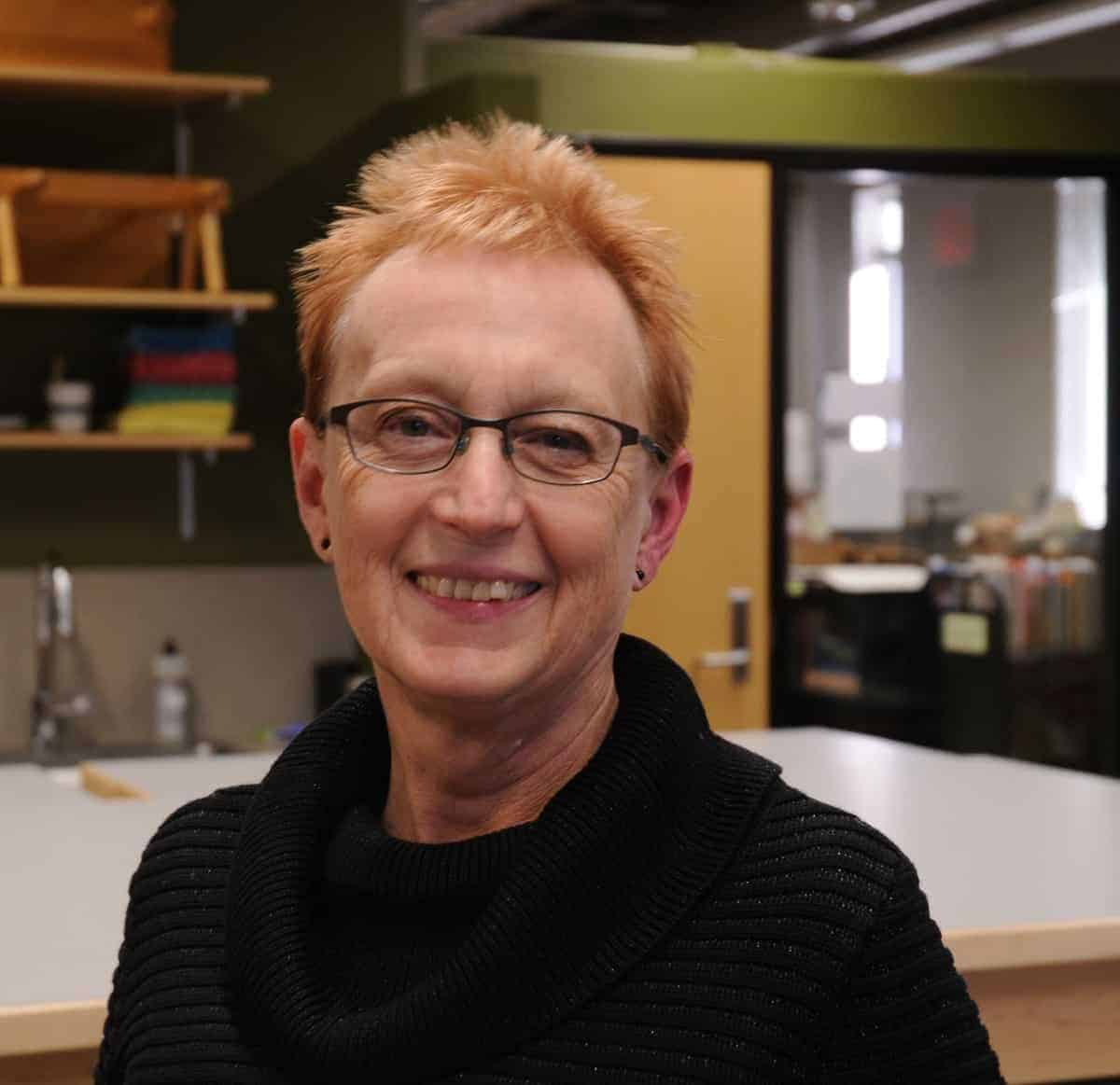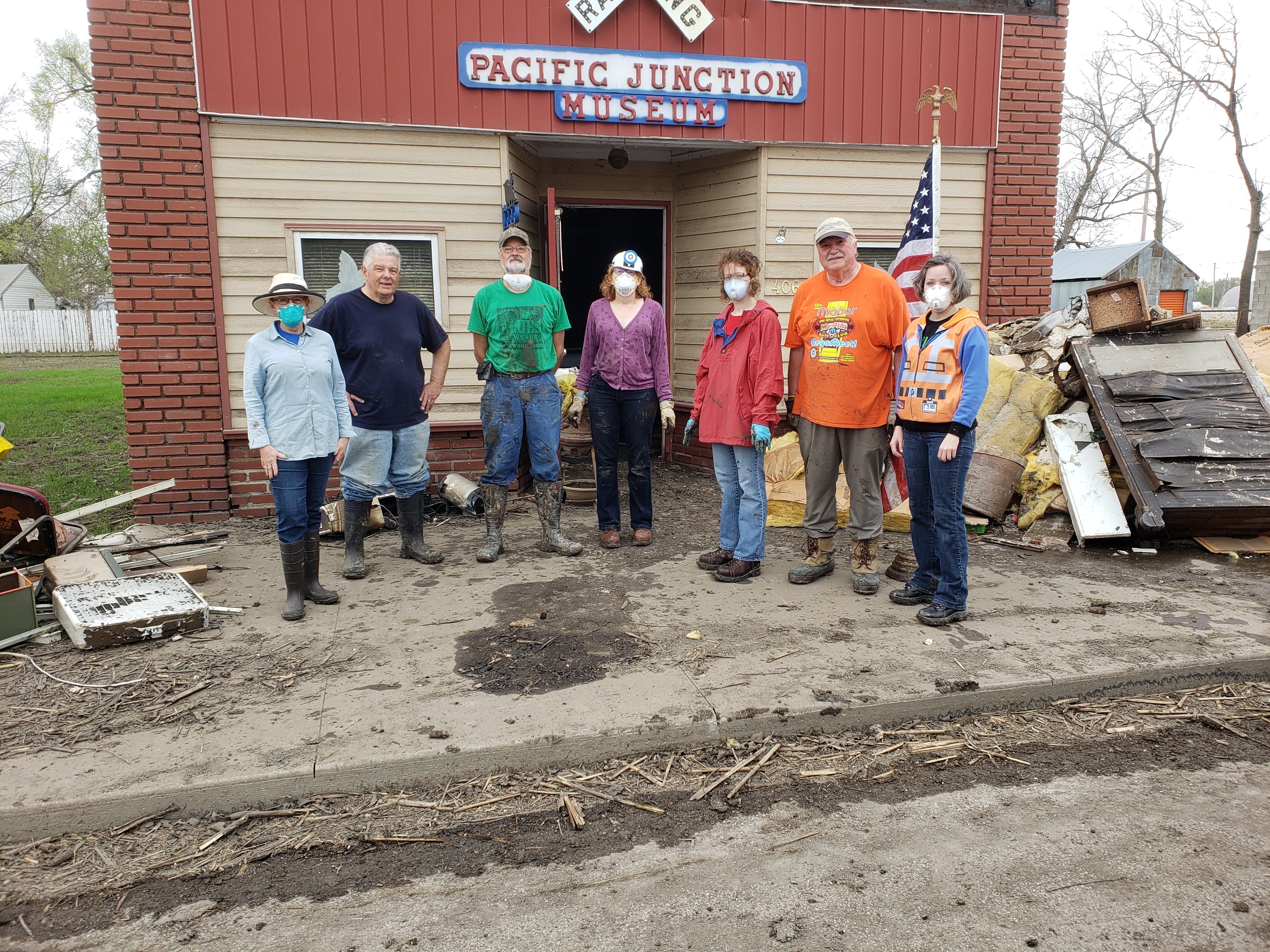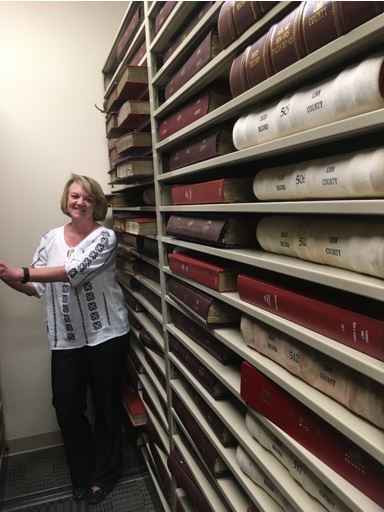Nancy E. Kraft, Head of Preservation and Conservation, has retired after serving 18 years at the University of Iowa Libraries.
Category Archives: Flood Recovery
IMALERT members assist in disaster recovery
On Monday, April 22, Iowa Museums, Archives, Libraries Emergency Response Team (IMALERT) members assisted with the retrieval and salvage of collection items in the flood-damaged Pacific Junction Railroad Museum (PJRM). We could not have had a more “perfect” flood recovery experience. The Mills County Historical Museum Director Steve Hunt from nearby Glenwood had everything well organized.
Nancy Kraft reflects on disaster response in new book chapter
Congratulations to our very own “Queen of Disaster,” Nancy Kraft, on the recent publication of her new book chapter. Nancy’s chapter, “Bridging the Rivers,” appears in Flood in Florence, 1966: a Fifty-Year Retrospective, out now from Michigan Publishing. Find out how Nancy developed her disaster response expertise as she recounts the numerous floods and otherContinue reading “Nancy Kraft reflects on disaster response in new book chapter”
Flood Recovery: Linn County Recorder’s Office
As Project Conservator at the UI Libraries, I am tasked with several workflows that are slightly outside of the regular Libraries Lab flow. One being conservation of the Keith Albee Vaudeville Theater Scrapbooks (see more here and here), another being treatment of Linn County Recorder’s Office record books. Nearly 430 Linn County record books have beenContinue reading “Flood Recovery: Linn County Recorder’s Office”
Fixing a detached cover
Tuesday, November 26, 2013 The National Czech & Slovak Museum & Library recently acquired this sweet chunky 19th century religious text and brought it into the lab. The binding had broken away from the text block after the first signature because it was so large. The cover was consolidated and the hinges were repaired withContinue reading “Fixing a detached cover”
An Artist’s Quandary
Tuesday, February 12, 2013 What does an artist do when his/her artwork is damaged? Throw it away because it has been changed and is no longer the same piece? Re-work it and make it a “new” painting? Repair the damage and try to keep the essence of the original? Or leave it as damaged andContinue reading “An Artist’s Quandary”
Assisting Artists After Hurricane Sandy
Friday, February 8, 2013 When we inspect an artist’s work, we also ask for the story of the piece to learn more about its history and composition. The pieces that this artist brought in were her final project before graduation where she used as pure a blue, red, and yellow that she could get. SheContinue reading “Assisting Artists After Hurricane Sandy”
Salvaging Artists’ Works After Hurricane Sandy
Thursday, February 7, 2013 A couple years ago, I received training so I could become part of a national cultural disaster response team called AIC-CERT (American Institute for Conservation Collections Emergency Response Team). After Hurricane Sandy, AIC (American Institute for Conservation) and the Foundation of the American Institute for Conservation established a Cultural Recovery CenterContinue reading “Salvaging Artists’ Works After Hurricane Sandy”
Piecing together a flood damaged map
Friday, October 19, 2012 We are nearing the end of the flood damaged flatwork for the National Czech and Slovak Museum and Library. One of the final pieces was a map that had previously been broken into 32 pieces and lined on a linen cloth. We carefully removed each piece of the map from theContinue reading “Piecing together a flood damaged map”
It’s a small world
Friday, May 18, 2012 I always love when things come together to remind us how small the world really is. I have been working on a Bible from the African American Museum of Iowa that was damaged in the flood. The Bible was in pretty bad shape. The binding had totally failed and it wasContinue reading “It’s a small world”


